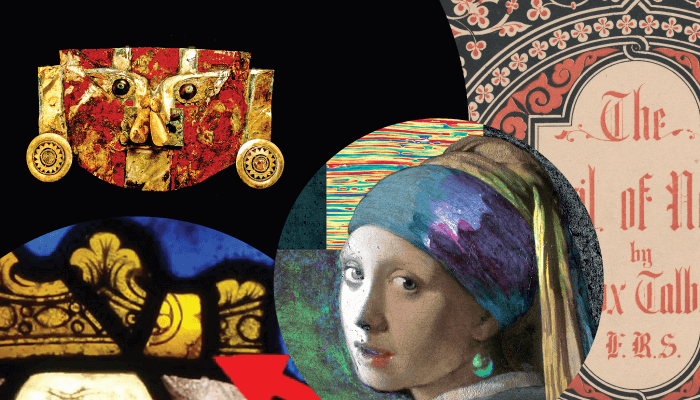A New Look at the Old Masters
Abbie Vandivere was granted the opportunity to examine Vermeer’s masterpiece, Girl with a Pearl Earring, with an international group of scientists. Which techniques did they employ to uncover the secrets of the Girl?
“All the individual technologies are exciting in their own right, but I believe the really novel aspect of our current analysis of the Girl was the holistic approach that was enabled by using so many different analytical techniques. By combining elemental identification with precise determination of element locations throughout the painting, we literally and figuratively got the full picture!”

"Our analytical work not only enables us to imagine how painting looked when Vermeer painted, it also gives us a record of how it is today. By preserving a record of this painting at this moment in time, we have a reference we can use to chart any changes that might happen in the future. But we have to accept that the painting has had a rough history – it was not really appreciated until the early 20th century.” Read on
The Mystery of the Sicán Mask
Analysis of the red paint preserved on the surface of a 1000-year-old gold mask excavated from a Middle Sicán tomb in Peru finds human blood and egg proteins – but why?
“When you ask questions about the past you have to be open to many possibilities. We can’t rule something out just because our current interpretation of the past is a certain way. More so than many other fields of study there is often only a very limited amount of material available so we must be careful about making general interpretations.”
“It is rare to see proteomics used in archeology to look at residues – in fact, it has only become possible in recent years with expanding protein libraries. Luciana and Elisabete’s analysis has shown very convincingly that it can be an important tool in the toolbox for answering archeological questions beyond species identification of bone.” Read on
Analytical Mythbusting
Richard Hark, LIBS expert and conservation scientist at Yale’s Institute for the Preservation of Cultural Heritage, reveals his detective work in the cultural heritage sphere
“We found that an inscription on the back of the map (in titanium ink), which had sometimes been referred to as the map’s ‘title’, was written over an existing inscription in iron gall ink. We believe that the addition of text was a deliberate attempt to connect the map with a genuine medieval document. Overall, there can now be no doubt: it’s a 20th century fake that was drawn on genuine 15th century parchment!”
“If I wasn’t a chemist, I probably would have been a historian. I took multiple history courses in college, and I do enjoy all those aspects. But in essence we’re doing forensic science. We get clues, we look at the evidence, and then we try to interpret what it all means. The case of the Vinland Map was relatively straightforward; other times, finding an answer can be extremely difficult! And that’s when art history, paleography, and analytical science must all come together to piece together the full story.” Read on
For more LIBS-focused quick reads from Richard Hark, read his Quick Tips for LIBS and Live, Laugh, LIBS




